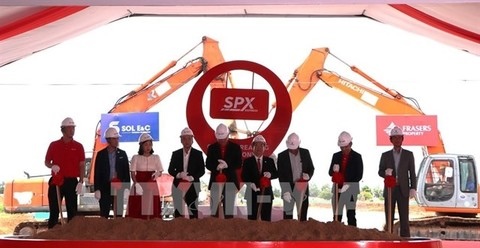Power crunch threatens Vietnam
Power crunch threatens Vietnam
The country, especially in the southwest region, is at risk of an electricity shortage this year and next, stated Minister of Industry and Trade Tran Tuan Anh at a meeting on November 11. The situation will not improve until 2022-2023 as the country is facing a shortage of investment in power generation and transmission.
The ministry noted in a report to the Government and the National Assembly that extreme weather has caused prolonged droughts for many localities across the country, reducing water flow to hydropower reservoirs. Meanwhile, coal and gas supplies for thermopower plants are inadequate, with coal imports estimated to rise to 35 million tons by 2035, while the country is also seeking to import gas to meet electricity generation demands.
The minister said that there are almost no backup power sources, so there is a risk of a power shortage in the coming years, estimated at 3.7 billion kilowatt hours (kWh) in 2021 in southern Vietnam and roughly 10 billion kWh in 2020. The greatest shortage of power is estimated at some 12 billion kWh in 2023 before gradually reducing to 7 billion kWh in 2024 and 3.5 billion kWh in 2025, according to the report.
“The situation is desperate,” remarked Minister Anh.
He suggested the National Steering Committee for Power Development, in collaboration with the Committee for Management of State Capital at Enterprises, tackle issues involving capital and foreign currency.
The grim situation was already mentioned by Deputy Prime Minister Trinh Dinh Dung during a National Assembly session last week
“The power shortage will become more obvious in the foreseeable future if we don’t have drastic measures to cope with it,” stressed Deputy Prime Minister Dung, who drew NA attention to the shortage of investment.
Significant investment is needed for power generation and transmission, at some US$130 billion from now until 2030, or US$12 billion per year, including US$9 billion for power production and US$3 billion for power transmission, Dung said.
The Deputy PM claimed that mobilizing these funds for the power sector in the next decade would be a tough task, adding that financial capacity remains a major challenge.
The structure of the electricity sector differs among regions. Dung explained that the northern and central regions consume 50% of the total power volume but produce more than 60%, whereas the southern region consumes 50% and produces 40%.
It requires both money and effort to build the 500 kilovolt North-South transmission line – tranche 3, Dung remarked.
He added that power transmission networks in several areas are not aligned with the newly generated volumes, which largely come from renewable energy projects.




















